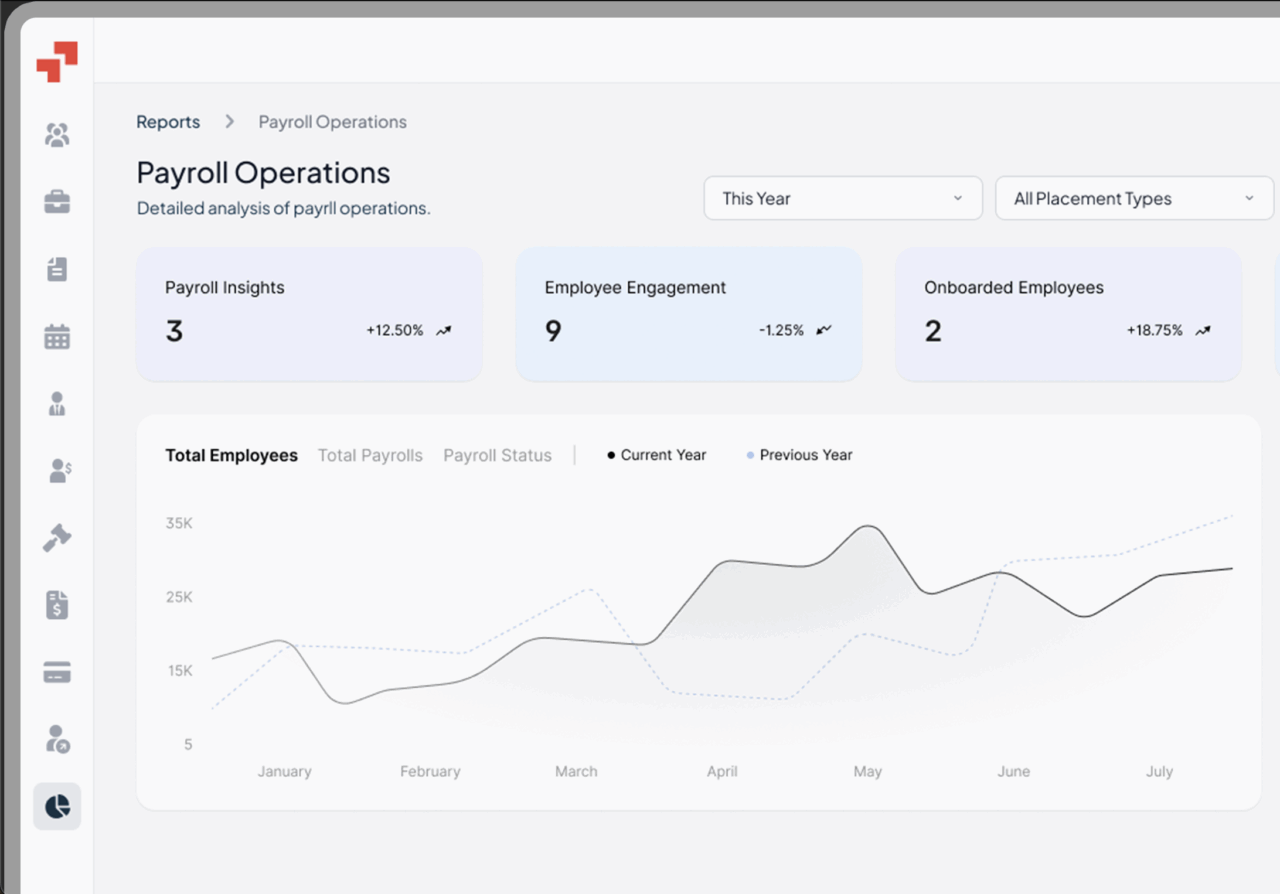Global Workforce GlossaryContract Employee
Related Terms
Contingent Worker
Misclassification
IR35 Legislation
Convert Contractors
Common Law Employee
The modern workforce thrives on flexibility, and contract employees are at the center of that transformation. They bring specialized skills, fresh perspectives, and agility to fast-moving projects—helping businesses scale quickly and efficiently. For organizations, this model balances talent needs with cost control while giving professionals the freedom to choose how and where they work.
Table of Contents
- What is a Contract Employee?
- How to Be a Contract Employee
- What are the Benefits of a Contract Employee
- Can a Contract Employee Become Permanent?
- Benefits of Hiring Contract Employees
- How Do Contract Workers Get Paid?
- Is There a Difference Between a Contract Employee and an Independent Contractor?
- What is the Difference Between a Contract Employee and an Internal Employee?
- Does Contract Work Count as Employment?
- Is a Contract Employee the Same as a 1099 Employee?
- How to Onboard and Manage Contract Employees
- Contract Employee Example
- PamGro: Your Partner in Hiring Contract Employees Globally
What is a Contract Employee?
A contract employee is a worker hired for a specific project or period under a contractual agreement rather than as a permanent staff member.
Businesses often hire contract employees to fill skill gaps, manage seasonal peaks, or tackle specialized projects. Unlike full-time employees, contract workers may not receive the same benefits, but they still contribute significantly to a company’s success.
Every country defines contract employees differently, but generally, self-employed individuals are hired on a contract basis to assist with short-term projects.
Industries like IT, healthcare, consulting, logistics, and creative services rely heavily on common contract worker positions. This setup allows companies to quickly scale teams up or down depending on workload. Contract work is popular in several industries that require specialized skills. For employees, it’s an opportunity to gain exposure, grow networks, and work across multiple industries.
How to Be a Contract Employee
To become a contract employee, you’ll typically apply through staffing agencies, job boards, or direct company postings. Once selected, you’ll sign a contract that outlines your role, pay structure, and employment duration. Employers should consider having contract employees sign non-disclosure or confidentiality agreements before beginning work.
Success as a contract employee requires building strong, specialized skills and continuously updating them. Many professionals also create portfolios to showcase results. Networking plays a big role—contractors who maintain strong client relationships often secure repeat engagements. Think of it as running your own career as a “mini business,” where maintaining a strong business relationship is crucial. Contract work offers greater flexibility over schedules and work locations compared to full-time employment.
What are the Benefits of a Contract Employee
If you hire a contract employee, they offer flexibility, diverse experience, and often higher hourly pay than salaried roles. Workers can avoid rigid hierarchies and maintain better control of their work-life balance. Additionally, hiring contract workers reduces the administrative burden compared to managing permanent employees.
For employers, hiring contract employees lowers long-term labor costs. Companies can bring in specialized expertise without offering full benefits packages. This is especially attractive to startups and expanding businesses that need agility without excessive overhead. However, contractor turnover can disrupt critical business functions due to temporary engagement
Can a Contract Employee Become Permanent?
Yes, contract employees can transition into permanent roles, commonly known as “contract-to-hire.” This arrangement allows businesses to evaluate a worker’s fit before committing to a long-term employment contract.
Employees benefit by showcasing their skills and potentially landing full-time positions. Employers reduce hiring risk and get to know the candidate before extending benefits or career development opportunities. Not all contracts have this option, so candidates should clarify expectations early.
Benefits of Hiring Contract Employees
Hiring contract employees provides companies with flexibility, cost efficiency, and rapid access to global talent. Businesses can scale staff based on project needs without worrying about long-term commitments.
Contract workers are especially valuable for:
- Seasonal surges (retail, logistics, tourism)
- Specialized expertise (IT, healthcare, finance)
- International expansion where companies test new markets
However, businesses should also weigh the key differences in disadvantages of hiring contract workers. These can include higher turnover, reduced loyalty, and the need for frequent onboarding. In some cases, over-reliance on contractors can weaken team culture. Limited loyalty is a disadvantage of hiring contract employees, as they may prioritize their own interests. Striking the right balance between full-time employees and contract staff is key to long-term success
How Do Contract Workers Get Paid?
Contract workers are generally paid hourly, weekly, or per project. The exact terms are clearly defined in their contracts. Unlike salaried employees, they may not get paid time off, healthcare, or retirement benefits. Employers are not required to provide employee benefits such as health insurance or retirement plans to contract workers.
Some companies handle payments directly, while others use staffing agencies or Employer of Record (EOR) providers. In most cases, contractors manage their own tax obligations, including necessary tax forms. However, payroll compliance rules vary globally—what’s valid in the U.S. may not apply in Germany, India, or Singapore. Employers are not responsible for withholding payroll taxes for independent contractors, making their tax obligations differ from those of employees. Businesses must ensure they classify and pay contractors correctly to avoid penalties.
Is There a Difference Between a Contract Employee and an Independent Contractor?
Yes, and it’s important to understand. A contract employee works under an employer’s supervision with defined hours and responsibilities. They may be eligible for certain benefits. An independent contractor, on the other hand, is self-employed, controls how they complete work, and usually invoices clients directly. Contract employees receive 1099 tax forms, while internal employees receive W-2 tax forms.
For instance, a contract nurse employed through a hospital agency is different from a freelance medical consultant who advises multiple clients. Misclassifying one for the other can lead to fines, lawsuits, and back taxes. Employers should always confirm correct classification with labor regulations.
What is the Difference Between a Contract Employee and an Internal Employee?
An internal (permanent) employee has an ongoing relationship with the company, receives benefits, and is often on a long-term career path. A contract employee works for a set period and may not enjoy the same perks.
Permanent employees are long-term investments, while contract employees offer flexibility for short-term needs. Smart workforce planning often involves balancing both—core teams made up of permanent staff, supported by contract workers who bring agility and specialist expertise.
Does Contract Work Count as Employment?
Yes, contract work counts as legitimate employment. Even though the arrangement is temporary, it is still legal employment under labor laws.
On resumes, contract roles demonstrate skills, adaptability, and industry experience. Employers value this history, especially for professionals in fields where project-based work is common, such as software engineering, creative design, or consulting. Contract work can serve as a bridge to permanent opportunities or as a career path in itself.
Is a Contract Employee the Same as a 1099 Employee?
Not exactly. In the U.S., “1099 employees” are technically independent contractors who receive a 1099 form for tax purposes. Contract employees, on the other hand, may be classified as W-2 employees if the company withholds taxes.
This distinction is critical for tax compliance. Misclassification can result in audits, penalties, and reputational risk. Outside the U.S., classification varies—some countries don’t use the 1099/W-2 system at all. Companies expanding globally must work with experts to navigate these differences, including federal income tax regulation
How to Onboard and Manage Contract Employees
Effective onboarding helps contract employees hit the ground running. Employers should provide clear role expectations to foster a strong employer employee relationship , project goals, and communication channels from day one.
Management should focus on deliverables, timelines, and accountability. Tools like Slack, Asana, or Jira streamline collaboration. It’s also essential to ensure contractors feel integrated into teams, even if they’re temporary, as this boosts productivity and retention.
For global businesses, onboarding requires even more care. Different countries have unique labor laws, including social security tax regulation data protection requirements, and cultural practices. A structured process that combines clear communication, compliance checks, and local HR expertise ensures contract workers stay engaged and motivated, no matter where they’re located.
Contract Employee Example
Imagine a U.S.-based SaaS startup entering Germany. Instead of setting up a costly subsidiary, the company uses an Employer of Record to hire contract software developers locally.
The developers sign 12-month contracts with hourly rates set in compliance with German labor laws. The SaaS firm benefits by accessing high-quality talent quickly, especially those who can provide their own equipment, while avoiding legal risks. If the expansion succeeds, the company can extend the contracts or transition workers into permanent roles.
PamGro: Your Partner in Hiring Contract Employees Globally
Hiring contract employees can be efficient, but it comes with compliance risks around classification, payroll, and labor laws—especially across borders. That’s where PamGro helps.
As a global Employer of Record, PamGro makes it simple to hire contract employees anywhere in the world without setting up a legal entity. We take care of:
- Locally compliant employment contracts
- Payroll, tax, and social security obligations
- Smooth onboarding across multiple countries
- Guidance on converting contractors into permanent staff
With PamGro, companies gain flexibility and peace of mind. Whether you need to hire one contract employee or integrate them with regular employees to build an entire international team, we ensure your global expansion is both compliant and cost-effective.
Hire the Best Talent, Anywhere






